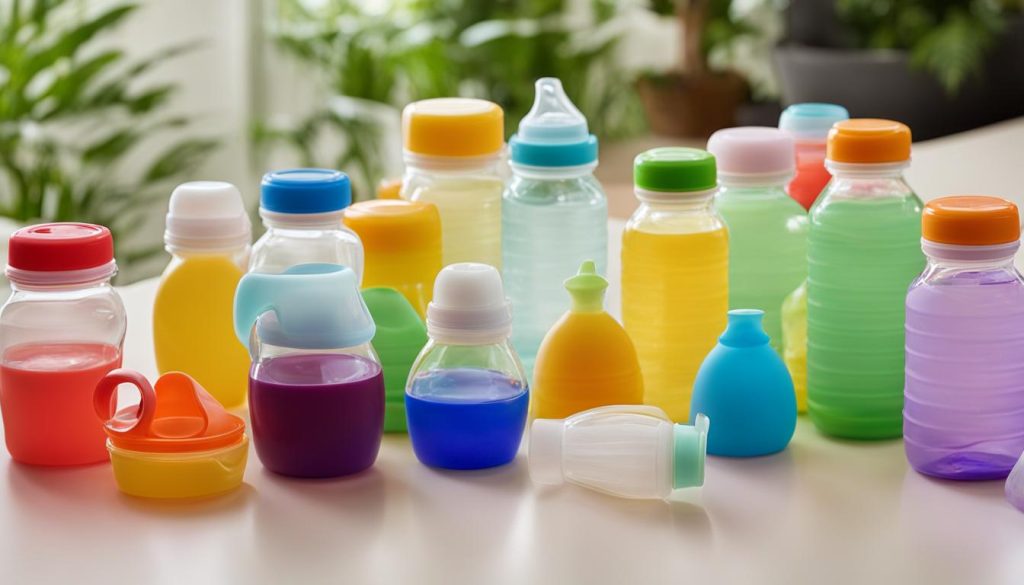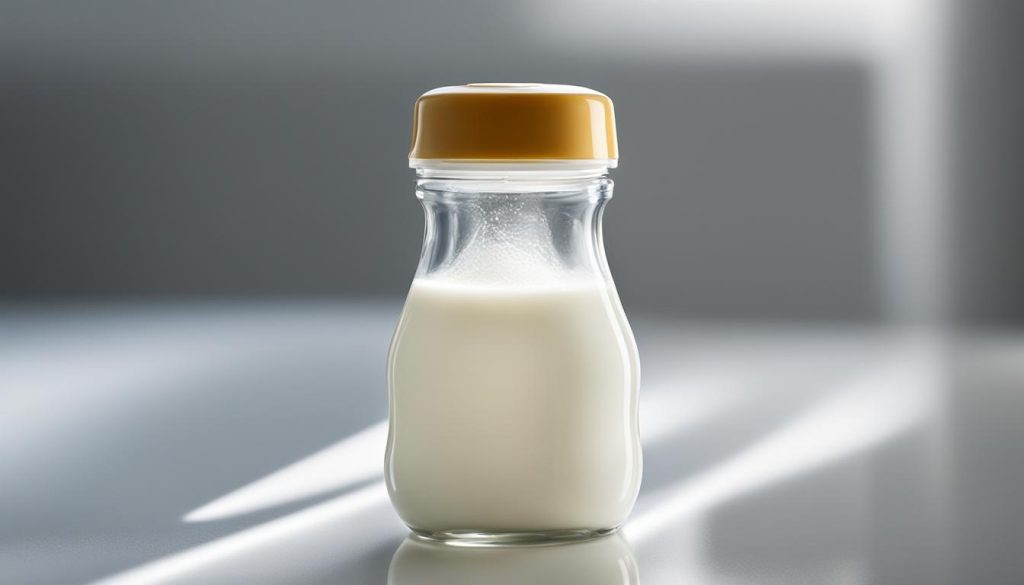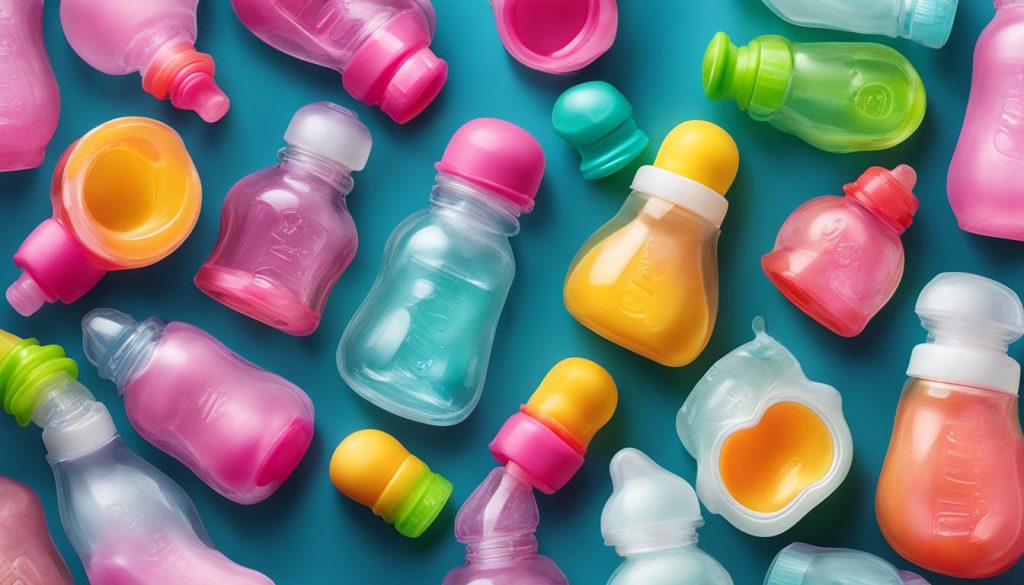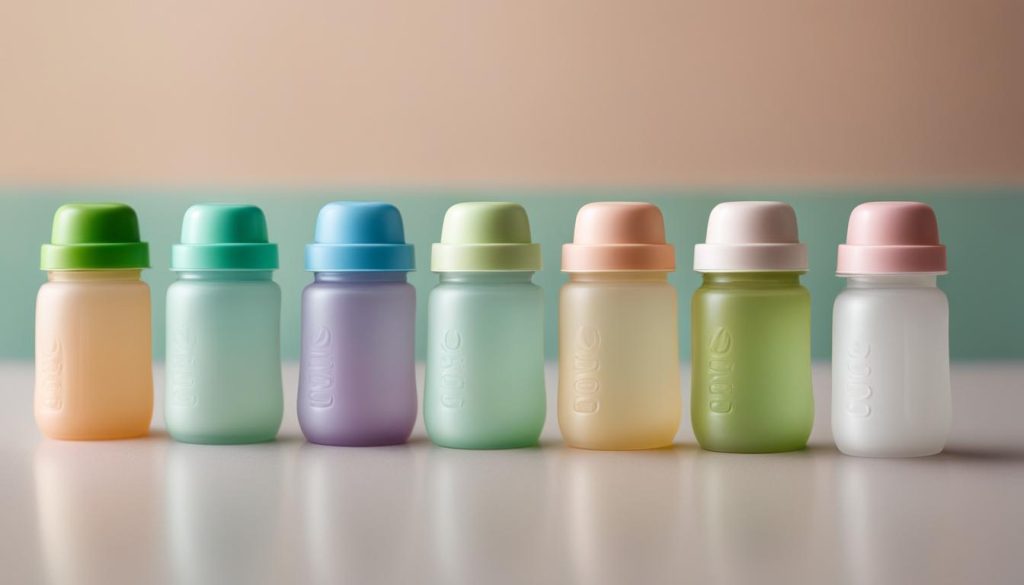When it comes to finding the best bottle for your 10 month old, I understand the importance of choosing a bottle that is safe, easy to use, and promotes healthy feeding habits. With so many options available on the market, it can be overwhelming to make the right choice. But don’t worry, I’ve done the research for you!
In this section, I will explore the top bottle options for your 10 month old, taking into consideration their features, materials used, and overall performance. Whether you’re looking for a baby bottle that is recommended by experts, a top rated bottle by parents, or simply the best feeding bottle for your little one, I’ve got you covered.
Choosing the right bottle for your 10 month old is crucial for their development and comfort during feeding time. So, let’s dive in and discover the best bottle options that will make this transition a breeze!
Types of Baby Bottles
When it comes to choosing a baby bottle for your 10 month old, there are several types of materials to consider, each with its own benefits and considerations. Understanding the different options available can help you make an informed decision that suits your baby’s needs.
Glass Baby Bottles
Glass baby bottles are a popular choice among parents for several reasons. They are durable, easy to clean, and free from harmful chemicals such as BPA. Glass bottles are also great at retaining the temperature of the liquid, whether it’s warm or cold. Additionally, they are scratch-resistant and do not retain odors, ensuring a clean and hygienic feeding experience for your baby.
Plastic Baby Bottles
Plastic baby bottles are lightweight and affordable, making them a practical choice for many parents. They are also shatterproof, which reduces the risk of breakage. However, it’s important to note that some plastic bottles may contain chemicals that can leech into the milk. To ensure the safety of your baby, look for BPA-free plastic bottles and avoid using them for hot liquids or putting them in the dishwasher, as high temperatures can cause the plastic to degrade.
Silicone Baby Bottles
Silicone baby bottles are known for their soft texture, durability, and heat-resistant properties. They are a safe option as they are free from BPA and other harmful chemicals. Silicone bottles also have a non-porous surface, which means they do not retain odor or stains. They are easy to clean and can withstand high temperatures, making them suitable for sterilization.
Stainless Steel Baby Bottles
Stainless steel baby bottles are another popular choice for parents who prioritize durability and longevity. They are resistant to scratches, rust, and staining, making them highly durable and easy to clean. Stainless steel bottles are also lightweight and can retain the temperature of the liquid for extended periods. However, they can be more expensive compared to other bottle materials.
With the variety of baby bottle types available, it’s important to consider your baby’s preferences, any potential allergies or sensitivities, and your own lifestyle when making a decision. Consulting with your pediatrician can also provide valuable guidance in selecting the best bottle for your 10 month old.
| Type of Baby Bottle | Advantages | Considerations |
|---|---|---|
| Glass Baby Bottles | Durable, easy to clean, chemical-free | Can be fragile |
| Plastic Baby Bottles | Lightweight, affordable, shatterproof | May contain chemicals, not suitable for hot liquids |
| Silicone Baby Bottles | Durable, heat-resistant, non-porous surface | May not be as sturdy as glass or plastic |
| Stainless Steel Baby Bottles | Durable, easy to clean, retain temperature | Can be more expensive |
Importance of Infant Feeding
Proper infant feeding plays a vital role in the growth and development of your 10 month old. Whether you choose to breastfeed or bottle-feed, ensuring that your baby receives the necessary nutrition is essential. Breastfeeding is often touted as the best choice due to the numerous benefits it offers both the baby and the mother.
One of the key advantages of breastfeeding is the boost it provides to the baby’s immune system. Breast milk contains antibodies that help protect against infections and diseases, reducing the risk of illnesses such as respiratory infections, ear infections, and gastrointestinal problems. Additionally, breastfeeding has been linked to a lower incidence of allergies and chronic diseases later in life.
However, there are situations where bottle feeding may be necessary or preferred. It could be due to personal reasons, medical conditions, or work commitments. It’s essential to ensure a smooth transition from nursing to bottle feeding to ensure that your baby’s nutritional needs are met. Discussing this transition with your pediatrician and following their guidance can help ensure a successful and healthy adjustment.
While breastfeeding provides unique benefits, bottle feeding can offer its own advantages. It allows for more flexibility as multiple caregivers can participate in feeding, providing the opportunity for bonding experiences with parents, grandparents, or other family members. Bottle feeding also provides a clear indication of how much your baby is consuming, allowing you to monitor their intake and ensure they are receiving enough nourishment.
Ultimately, the choice between breastfeeding and bottle feeding should be based on your personal circumstances and what works best for you and your baby. Both methods can provide the nutrition and bonding experiences that are crucial for your 10 month old’s overall well-being.
The Benefits of Breastfeeding:
- Boosts the baby’s immune system
- Reduces the risk of infections, allergies, and chronic diseases
- Provides bonding opportunities between mother and baby
- Ensures optimal nutrition and hydration
The Benefits of Bottle Feeding:
- Allows for flexibility and participation from multiple caregivers
- Provides a clear indication of the baby’s intake
- Can be a convenient option for working parents
- Ensures the baby’s nutritional needs are met
Comparing Materials Used in Baby Bottles
When it comes to choosing the right baby bottle for your 10-month-old, one important factor to consider is the material used in the bottle. Different materials have their own pros and cons, and understanding these can help you make an informed decision.
Let’s compare the most common materials used in baby bottles: glass, plastic, and silicone. Each material brings its own advantages and considerations, ensuring the safety and durability of the bottle while providing a comfortable feeding experience for your little one.
Glass Baby Bottles
Glass baby bottles are a popular choice among parents who prioritize safety and purity. They are made of durable, non-toxic glass that is free from harmful chemicals such as BPA, phthalates, and PVC. Glass bottles are also easy to clean and maintain, and they do not retain odors or stains. However, it’s important to note that glass bottles can be fragile and may break if dropped.
Plastic Baby Bottles
Plastic baby bottles are lightweight, affordable, and widely available. They are often made of polypropylene, a durable and BPA-free plastic. Plastic bottles are shatterproof and a good option for parents who are concerned about glass bottles breaking. However, some plastic bottles may contain chemicals that can leach into the milk, especially if they are heated or used repeatedly. To ensure the safety of plastic bottles, look for ones labeled as BPA-free.
Silicone Baby Bottles
Silicone baby bottles are a newer option on the market and are gaining popularity. They are made of soft, flexible silicone material that is free from harmful chemicals and is resistant to high temperatures. Silicone bottles are lightweight, easy to clean, and often collapsible for convenient storage. However, they may not be as sturdy as glass or plastic bottles, and some babies may have difficulty latching onto the silicone nipples.
When choosing the material for your baby’s bottle, it’s important to consider your priorities and preferences. All three materials have their own unique benefits, and finding the one that suits your needs can ensure a safe and enjoyable feeding experience for your 10-month-old.
Different Types of Nipples
When it comes to choosing the right bottle nipple for your 10-month-old, there are several options available. Understanding the different types of nipples and their features can help ensure a comfortable and enjoyable feeding experience for your baby.
Wide Neck Nipples
Wide neck nipples are designed to mimic the shape and feel of the breast, making them an excellent choice for breastfed babies. These nipples provide a natural latch and can help ease the transition between breastfeeding and bottle feeding. They are typically wider and softer, allowing for a more comfortable feeding experience.
Slow Flow Nipples
Slow flow nipples are designed to release milk at a controlled pace, similar to breastfeeding. These nipples are ideal for younger babies who are still developing their feeding skills. The slow flow helps prevent overfeeding and allows the baby to control the flow of milk, reducing the risk of gas and colic.
Medium and Fast Flow Nipples
As your baby grows and becomes more proficient at feeding, you may need to transition to medium or fast flow nipples. Medium flow nipples allow for a slightly faster flow, accommodating the increased feeding demands of older babies. Fast flow nipples provide the quickest flow and are suitable for babies who can handle a faster milk flow without choking or swallowing excessive air.
Choosing the Right Nipple for Your Baby
Choosing the right nipple for your baby depends on their age, feeding skills, and comfort level. It’s important to observe how your baby responds to different nipple types and adjust accordingly. Some babies may prefer a specific type of nipple, while others may have different preferences. Paying attention to your baby’s cues and consulting with your pediatrician can help ensure you select the most suitable nipple for their individual needs.
Bottle Maintenance and Sterilization Tips
Proper maintenance and sterilization of baby bottles are essential to ensure the health and safety of your 10-month-old. By following a few simple tips, you can keep your baby’s bottles clean and prevent the growth of harmful bacteria.
To maintain baby bottles, start by thoroughly cleaning them after each use. Use hot, soapy water and a bottle brush to scrub the inside and outside of the bottles, as well as the nipples and any other parts. Rinse them well to remove any soap residue.
In addition to regular cleaning, it’s important to sterilize the bottles to eliminate any remaining bacteria. There are several methods you can choose from, such as boiling the bottles in water for at least 5 minutes or using a steam sterilizer. Another option is to use sterilizing solutions that are specifically designed for baby bottles. Follow the manufacturer’s instructions for whichever method you choose.
To prevent bacterial growth, make sure to dry the bottles thoroughly after cleaning and sterilizing them. You can let them air dry on a clean rack or use a clean, lint-free towel to dry them by hand. Avoid using cloths or sponges that may leave behind fibers or introduce germs.
FAQ
What should I consider when choosing a bottle for my 10 month old?
When selecting a bottle for your 10 month old, it’s important to consider factors such as safety, ease of use, and promotion of healthy feeding habits.
What are the different types of baby bottles available?
Baby bottles are available in various materials, including glass, plastic, silicone, and stainless steel.
What are the benefits of breastfeeding?
Breastfeeding provides numerous health benefits for both the baby and the mother, including a reduced risk of infections, allergies, and chronic diseases.
What are the pros and cons of different bottle materials?
Glass baby bottles are free from harmful chemicals but can be fragile. Plastic baby bottles are lightweight but may contain chemicals that leech into the milk. Silicone baby bottles are durable and BPA-free but may not be as sturdy. Stainless steel baby bottles are easy to clean and durable.
How do I choose the right nipple for my 10 month old?
Different nipples, such as wide neck nipples, slow flow nipples, medium flow nipples, and fast flow nipples, cater to different feeding needs. Choosing the appropriate nipple based on your baby’s age and feeding abilities is essential for their comfort and proper feeding.
How do I maintain and sterilize baby bottles?
Regular cleaning of bottles, nipples, and bottle parts is crucial to prevent bacteria growth. Sterilization methods like boiling, using steam sterilizers, or using sterilizing solutions can further eliminate harmful germs.




